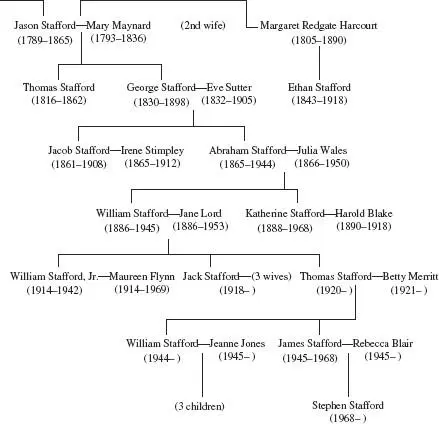Wohlers.
And the people who preserve the ships: Across America, historic vessels have been saved from the scrap heap, sometimes with public funds, but usually by private groups who recognize that these vessels are more than naval artifacts; they are windows onto the times in which they were built and into the lives of those who served aboard them. So, starting from my home port of Boston: the frigate Constitution and the destroyer Cassin Young; in Fall River, Mass., the battleship Massachusetts, the destroyer Joseph P. Kennedy, the submarine Lionfish; in Groton, the first nuclear submarine, the Nautilus; in New York, the carrier Intrepid; in Philadelphia, the Olympia, Admiral Dewey’s flagship, and the submarine Becuna; in Baltimore, the frigate Constellation; at the Washington Navy Yard museum, the destroyer Barry; at Pearl Harbor, the submarine Bowfin, and of course, the memorial at the battleship Arizona.
And to a few others: David Baker, at the Office of Naval Intelligence; Bart Davis; Ned Downing; Peter Drummey, of the Massachusetts Historical Society; Professor William Fowler; Robert Anthony Nolan; Ann Rauscher; Randy Wayne White; Anne Grimes Rand and the staff of the USS Constitution Museum; the staff of the Submarine Force Library and Museum in Groton, Connecticut.
And finally, to my editor, Jamie Raab; my agent, Robert Gottlieb; and of course, to my wife and children, who never complain.
WILLIAM MARTIN
December 1995


PROLOGUE
The Last Chapter

“Don’t have your tongue between your teeth.”
The line snapped through Steve Stafford’s head before every cat shot.
It was what his flight instructor had said to him the first time he launched from an aircraft carrier, and he’d never forgotten it.
He throttled up. He flashed his lights, signaling that he was ready.
The catapult officer dropped to one knee, touched his illuminated green wand to the deck, then pointed it toward the bow, playing his part in the launch ballet, relaying his orders without words while the jet engines roared and the wind whipped over the bow at twenty-five knots.
Steve Stafford did not hear the plane. Instead, he felt it…at the base of his spine and the center of his chest. But inside his helmet, there was a strange quiet. He could listen to his own breathing…to the voice of Joe Digger, his bombardier-navigator…and to the calm voice inside his own head: Don’t have your tongue between your teeth or you might bite it off. And be professional.
It had come at last. All the training—Naval Academy, flight school, carrier quals, replacement air group—would finally mean something.
The catapult—a steam-driven slingshot that could throw a pickup truck two miles—grabbed his A-6E Intruder by the nose gear and fired. The plane shot forward. The jolt slammed Steve against his seat and snapped his jaws. Then eighteen thousand pounds of Pratt and Whitney turbojet thrust kicked in, lifting him off the deck of the USS America and out over the Red Sea.
He formed with his wingman. They formed with their squadron. And the night blazed with the man-made stars of Operation Desert Storm—thirty A-6s and F-14 Tomcats, vectoring northwest, screaming low over the Arabian desert, rocketing toward an Iraqi airfield designated H-2. Their mission: to strike a blow for the New World Order. And be professional.
Steve had the controls. Joe Digger navigated from the AVA-1, which delivered flight data and a synthetic terrain/sea and sky image on the CRT screen.
In two hours, they were closing on H-2.
As long as the Stealth bombers had punched holes in Iraqi radar cover, the A-6s would be in and out before the Iraqis knew what hit them, and if any Iraqi MiGs came up, the F-14s would be waiting to send them right back down again.
This was not a pretty mission. No laser-guided bombs here. Just twelve thousand pounds of Rockeye, big cannister bombs that carried little bombs designed to tear up runway concrete like a plow tearing up dry ground. They shot in low, not much more than two hundred feet. Steve made a perfect approach at ninety degrees to the runway, and Joe Digger delivered the ordnance. “Bombs away.”
Flash and flame stitched themselves across the ground and lit the desert all around.
“Bingo,” said Joe Digger calmly.
“Uh, roger.” Sound professional.
Alarm! Alarm! Buzzing in the headsets. Flashing on the CRT screens. Surface-to-air missiles locked on.
“We got SAMs,” said Digger.
“Roger. Visual contact,” said Steve, his eyes fixed on two tails of flame rising toward them through the darkness. “Release countermeasures.”
The air beneath the plane was suddenly littered with aluminum chaff intended to confuse the missiles.
Whoosh! One SAM blew by just fifty feet to starboard, chasing the aluminum. And whoosh! The other shot under the plane, its exhaust burning so bright that it lit the two faces in the cockpit. American countermeasures worked. Iraqi proximity fuses did not.
But now, tracers began to rise in long, delicate strands all around H-2. That meant triple-A: antiaircraft artillery. Slow, primitive, altitude-fused explosives, the same thing they shot at B-17s over Europe fifty years ago. But if there’s enough triple-A going up, someone’s bound to come down.
1 comment